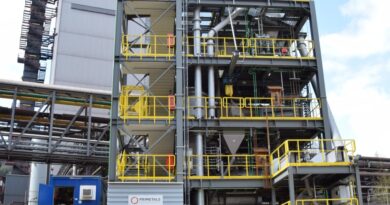STEEL: Digital disruption and application of emerging technologies
When we consider the impact of digital disruption on organisations, steel companies tend to be overlooked. However, the fact is that entire industry needs an upgrade to achieve its true potential moving forward, especially considering the various challenges the industry is facing.
Continuous trade wars between the world’s major economies and the steel vs aluminium debate in auto manufacturing are some of the many well-known threats that the steel industry needs to develop strategies for. Likewise, unexpected threats, the surprises that arise through digital technologies and changing customer expectations also merit consideration.
These new and possibly more disruptive improvements can challenge the traditional steel company’s business models. Digital disruption will enable the steel industry to prepare itself for unexpected challenges and become more competitive.
The advantages of the digitised value chain include seamless client interaction and higher service levels, a 2–4% improvement in EBITDA, and reductions in inventory of 10 days or more. Companies can benefit from emerging technologies like predictive analytics, IOT and data lakes through agile pilot tests and get positive results within a few weeks or months.
What’s more, most organisations can start gaining positive ROI in the first few years. As per the Global Digital Operations Study by PwC and Strategy&, companies all over world are expecting to increase their digital ecosystem maturity over next five years.
Some of the challenges faced by steel companies which can be solved by emerging digital technologies are: First, complex value chains pose a serious challenge to the metal and steel industry. Organisations must take steps to deal with the vast amount of interconnected assets, a varied client base, a large number of items with changing quality requirements and services, and complicated distribution channels with various margin implications.
Though utilisation of resources is recognised as a priority to determine incentives, it is not the sole factor influencing the business drivers that impact overall revenue, profit margin, working capital, or service levels. Plants and resources usually work in silos, instead of working together to meet a larger strategic goal.
Inventory network administrators either lack or have little access to real-time data, rendering them incapable of foreseeing changes in the market. As a result, companies end up acting defensively, without having the capacity installed to minimise risk and leverage short-term opportunities, which ultimately leads to significant value losses.
Metal and steel organisations have been struggling to overcome these challenges; however, conventional operational improvement techniques have their own limitations. Digitisation can help in breaking through the human capacity bottleneck and developing extensive real-time performance systems in the overall supply chain of the steel industry, thereby resolving some of the challenges.
Variability across the steel Industry—chiefly in processes, production and supply chain, and labour costs—decreases as digital connectivity is embedded vertically and horizontally throughout companies, streamlining their processes and yielding efficiencies.
Also, as demand for customised services and products rises, digital manufacturing (including real-time data analytics, self-monitoring and remote control of equipment) will enable faster tailoring of processes and operations that are less dependent on human labour, thus cutting the costs of variability in conventional manufacturing.
Of course, not all digital technologies will result in cost cutting and revenue generation for all manufacturers to the same degree. Steel companies are digitalising operations incrementally and looking to grab the low-hanging fruit with the highest RoI. One of the leading American vehicle manufacturing companies has connected all of its industrial robots to a centralised cloud, which can back up programs and monitor performance and signals when there is an imminent need for repairs, preventing or reducing the idle time of any of the company’s thousands of robots.
Preventing downtime could lead to massive savings, given that a study by Nielsen Research, estimated that any disruption to production at automotive factories costs an average of USD 22,000 a minute.




